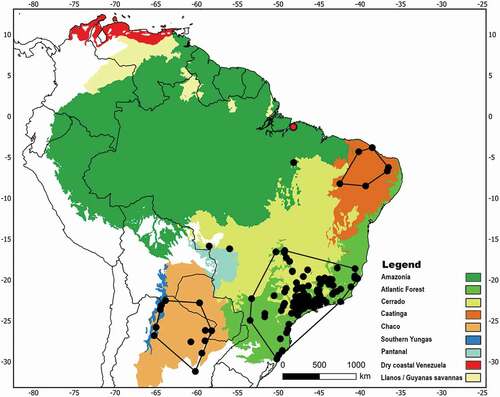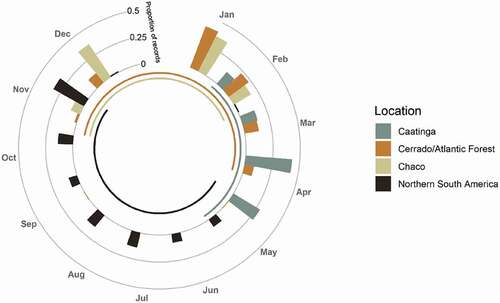Figures & data
Figure 1. Cluster analyses using breeding records indicate three main likely breeding grounds of the Lined Seedeater Sporophila lineola in South America (polygons). In red: two overlapped historical breeding records in the Amazon from 1917 (Snethlage Citation1935). The black isolated dots indicate isolated contemporary records.

Figure 2. Migration schedule of Lined Seedeaters Sporophila lineola considering the three core breeding grounds identified here (Caatinga, Cerrado/Atlantic Forest, and Chaco) and their wintering area in Northern South America.

Table 1. Influence of rainfall on the migratory dynamic of Lined Seedeaters Sporophila lineola. Negative binomial generalised linear mixed model documenting variables affecting the abundance of Lined Seedeaters (number of observations) per grid cell, with the proportion of precipitation occurring in the last quarter (‘rain’) in each grid cell as the main fixed predictor, and the number of records of all the species per grid per month (N points of all species) as a covariate. Gird identity was used as a random effect. This output includes all records of Lined Seedeaters in eBird and WikiAves.
